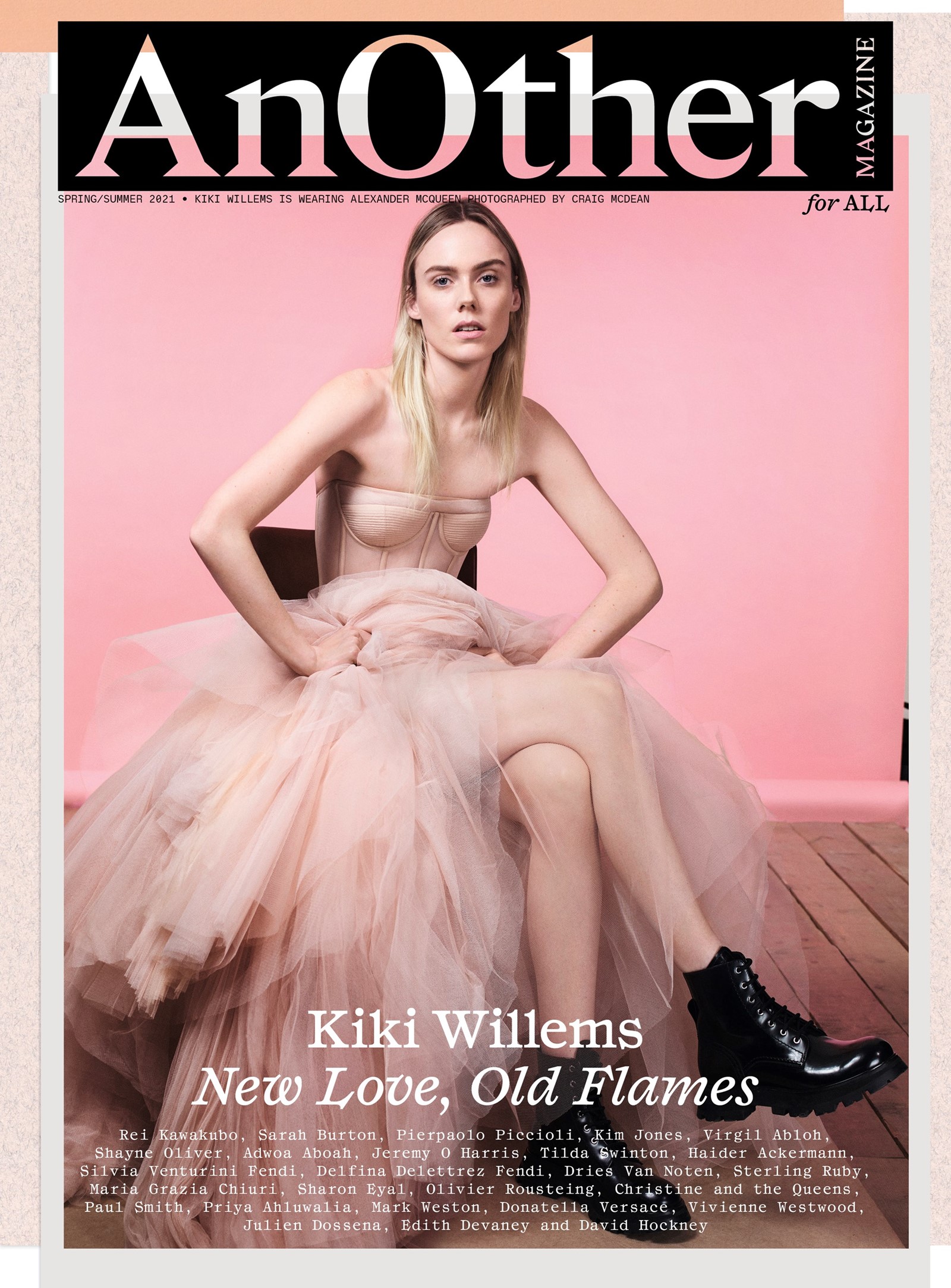This article is taken from the Spring/Summer 2021 issue of AnOther Magazine. To celebrate our 20th anniversary, we are making the issue free and available digitally for a limited time only to all our readers wherever you are in the world. Sign up here.
A little-appreciated fact: Sarah Burton first arrived at Alexander McQueen in 1996. She has been with the house for 25 years now, a quarter of a century and more than half her life. It remains the stuff of fashion legend that, back then, the Prestbury-raised, Saint Martins-educated designer – then named Sarah Heard – was on an internship, introduced to McQueen by Simon Ungless, her print tutor and his friend and collaborator. While she went back to finish her degree – she was diligent from the offset – she returned to McQueen in 1997. And never left.
Despite that background, this has undoubtedly been a formative decade for Burton. Her first solo collection for Alexander McQueen was shown during the Spring/Summer 2011 Paris season, exactly ten years before this one. Throughout that time, she has been widely celebrated – even loved – making the transition from first assistant to her mentor to creative director of an international fashion brand. She helms an awe-inspiring and closely guarded legacy that she helped to create, today perpetuating and reinventing it season after season. And she oversees absolutely everything – womenswear, menswear, accessories, campaigns, communications, retail concepts. Burton has created an educational studio space – home to presentations including Unlocking Stories and Roses – opening up the layered and complex process behind the creation of McQueen collections past and present on the top floor of the Bond Street flagship store. She conceived the design of that too, along with the architect Smiljan Radic, using a concept that has now been rolled out across the world to 65 McQueen stores. She has held workshops for students covering everything from research to sketching to draping. More recently, Burton has worked with young teenagers, producing smaller sizes of McQueen designs for them and giving them materials with which to customise their pieces, encouraging them to style themselves and be photographed with their contemporaries.
Burton does this because she is driven, and always has been, by a love of her work, by a dedication to her craft and a belief that a human being’s potential to create is vitally important. She says herself: “I think we are very lucky to have a creative way to express how we feel. Through our jobs, we say how we feel.” And there is great joy in that. And this despite any past sadness, though that was considerable too. She would like the act of creation to give children “a sense of release with no fear attached to it – and that’s a great thing”. She would like “to give something back”.
Burton’s Spring/Summer 2021 womenswear collection for Alexander McQueen marks something of a departure, both in its appearance and the way in which it was shown. In place of a catwalk presentation came a film, First Light – a collaboration with the director Jonathan Glazer (Under the Skin, Sexy Beast). It was shot, as the rather beautiful name suggests, at dawn, on the banks of the River Thames, against the London skyline and pale autumnal skies: a backdrop that feels meaningful to this fashion name above all others. Glittering modernist structures jostle for position by the magnificent 18th-century dome of St Paul’s Cathedral. Rebuilt by Sir Christopher Wren after the destruction caused by the Great Fire of London, it is a metaphor for the beauty that may come from tragedy. It feels apt today. In September 2010, St Paul’s was, of course, the location for a memorial service for the house’s founder, Lee Alexander McQueen, who died in February that same year. There are Victorian bridges in First Light, too: lovers embrace and picnickers recline beneath their heavy iron girders. McQueen himself and Burton with, and then after him, continuously looked to that era for inspiration. Victorian bodices, elaborate embroideries, savagely beautiful corsets and sharp gentlemen’s tailoring – for him, and for her – are constant McQueen references, all juxtaposed with modernity: experimental fabrication, proportion and cut. Like those skyscrapers next to Wren’s cupola, this evokes a sense of timeless beauty, a comforting familiarity alongside an arresting, exciting strangeness.
In First Light, a woman sits in the mud by the water dressed in a deconstructed corseted dress in softest pink with an asymmetric skirt in layer upon layer of raw-edged tulle. Said skirts are well and truly muddied, then, and this too is an image that evokes quintessential McQueen. The raw and the refined, the old and the new, the elemental and the urban, the fragile and the strong. Those contrasts – paradoxes – are central to the house’s handwriting.
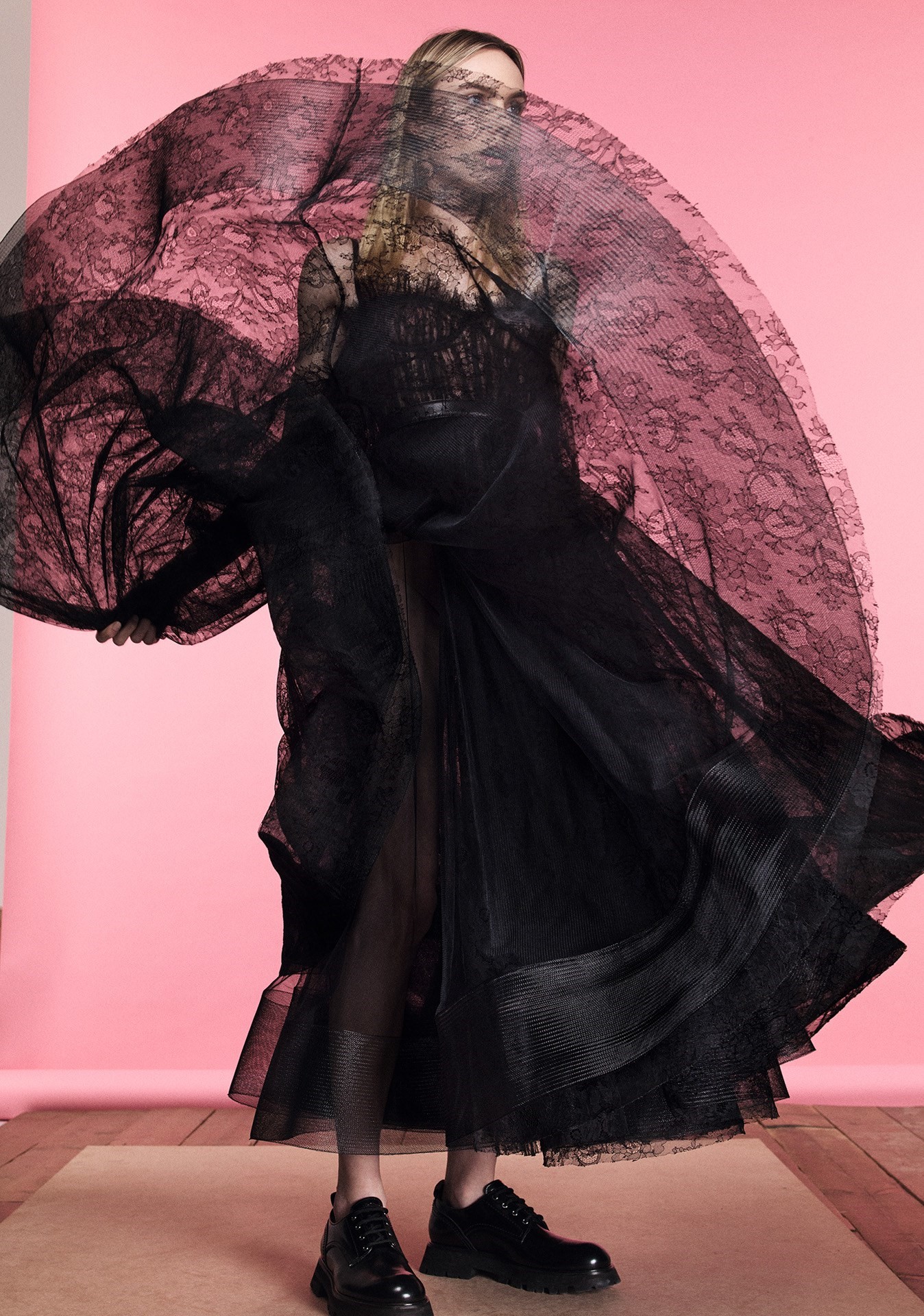
A move forwards, perhaps, but Burton refers to this collection as “a homecoming” of kinds. That is at least partly a result of the circumstances in which it was created – McQueen himself famously started out with next to nothing in terms of resources – fabrics were sourced from anywhere and everywhere, often bought cheaply from market stalls, used to create magic. Alexander McQueen in 2021 is very different to Alexander McQueen in the early 1990s – yet this season, there were parallels. Certainly, Burton and her team had less immediately to hand than usual, in every sense. Without the initial inspirational research trip – Wales, Ireland, the cities and countryside of the north of England, the wilds of Cornwall and Wiltshire have all been visited in recent times – the McQueen team instead looked inwards. They made the collection’s initial toiles in their kitchens, dyed fabrics in their gardens, and cut, draped and sewed pieces from start to finish at home. Much of their work was done by hand.
Homecoming, at home. Sarah Burton was raised in the north of England, but home for the label means London. It has always been based in the city – though it usually shows as part of Paris’s biannual prêt-à-porter. That location emphasises the couture quality that characterises Burton’s work: by contrast, this is a collection inspired by the capital’s deserted streets, by the spirit of a city that is loved by all who work at Alexander McQueen. And it revealed hidden depths that may once have been taken for granted but that, at this point in its history in particular, shine. If Paris means the fantasy of couture, London means reality – not necessarily harsh, but with grit. Men’s City tailoring, workwear, denim, the leather jackets of punks, mods and rockers, the trench coats of the Great War – all, incidentally, modern wardrobe archetypes, ripe for study. Some are cross-bred, like Victorian botanical specimens: they become hybrids, that word is also a part of the McQueen vernacular.
Necessity became the mother of invention, but also intention. The result of this work was a collection more essential, less embellished, though far from straightforward. Aesthetically, there are none of the fairy-tale embroideries more recently associated with the label – exquisite for sure, yet to the woman behind them, not as central to the fashion conversation for now. But the core of McQueen – its heart and soul – is evident throughout, is seen in every garment. That soul is, of course, the cut: this refers back to McQueen in its nascency, at which point pattern-making drove it, whether that pattern was cut in Prince of Wales check or indeed rubber, metal or wood. Perhaps with that in mind, the aforementioned toiles themselves, the process of fashion, became part of the final result: couture silhouettes realised in humble fabrics, every detail of cut, proportion, finish and, most importantly, shape emphasised in their purity. Decoration was replaced with structure, garments turned inside out to expose the labour – and love – that went into them. Today, they seem more lovely than any embroidery.
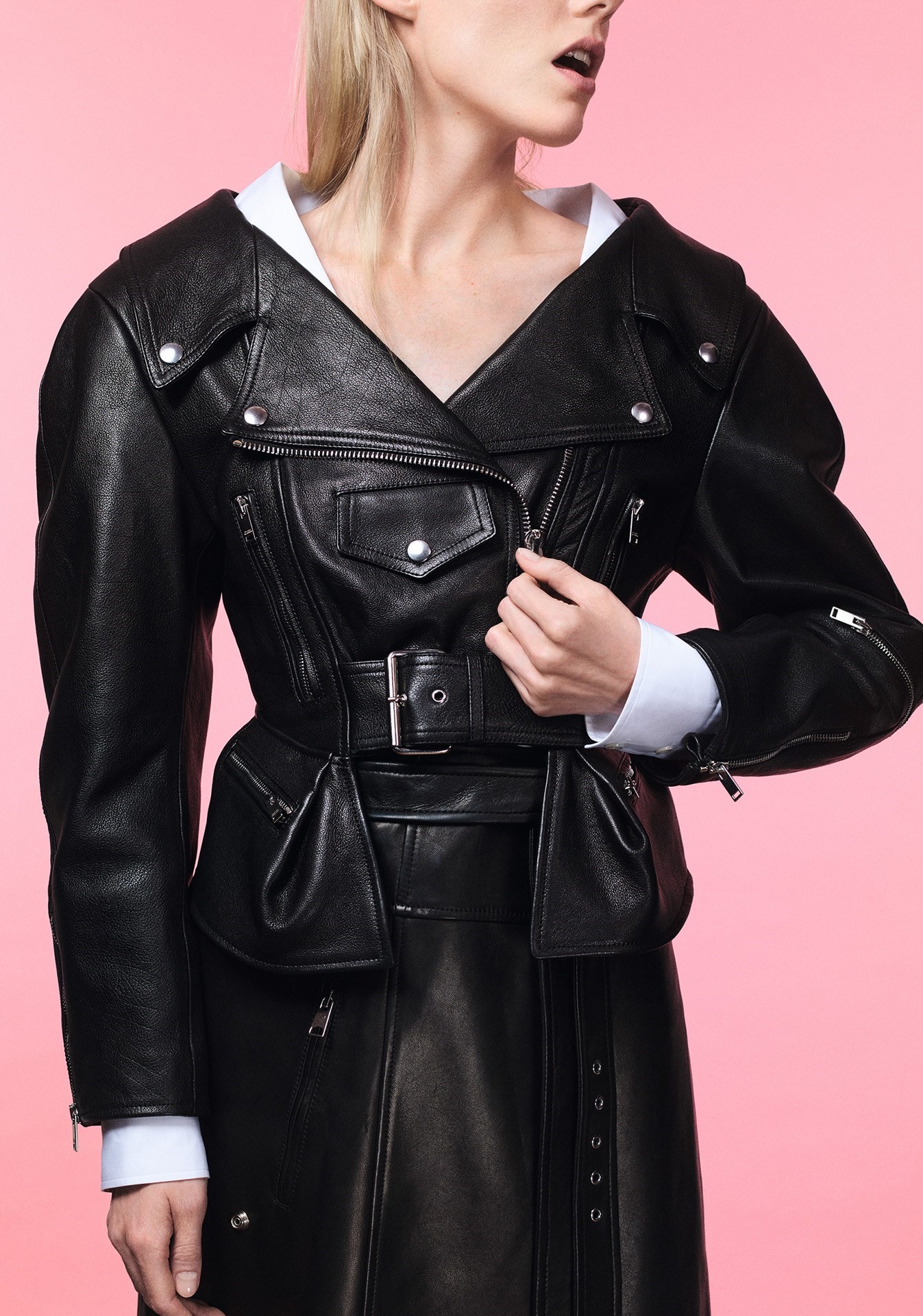
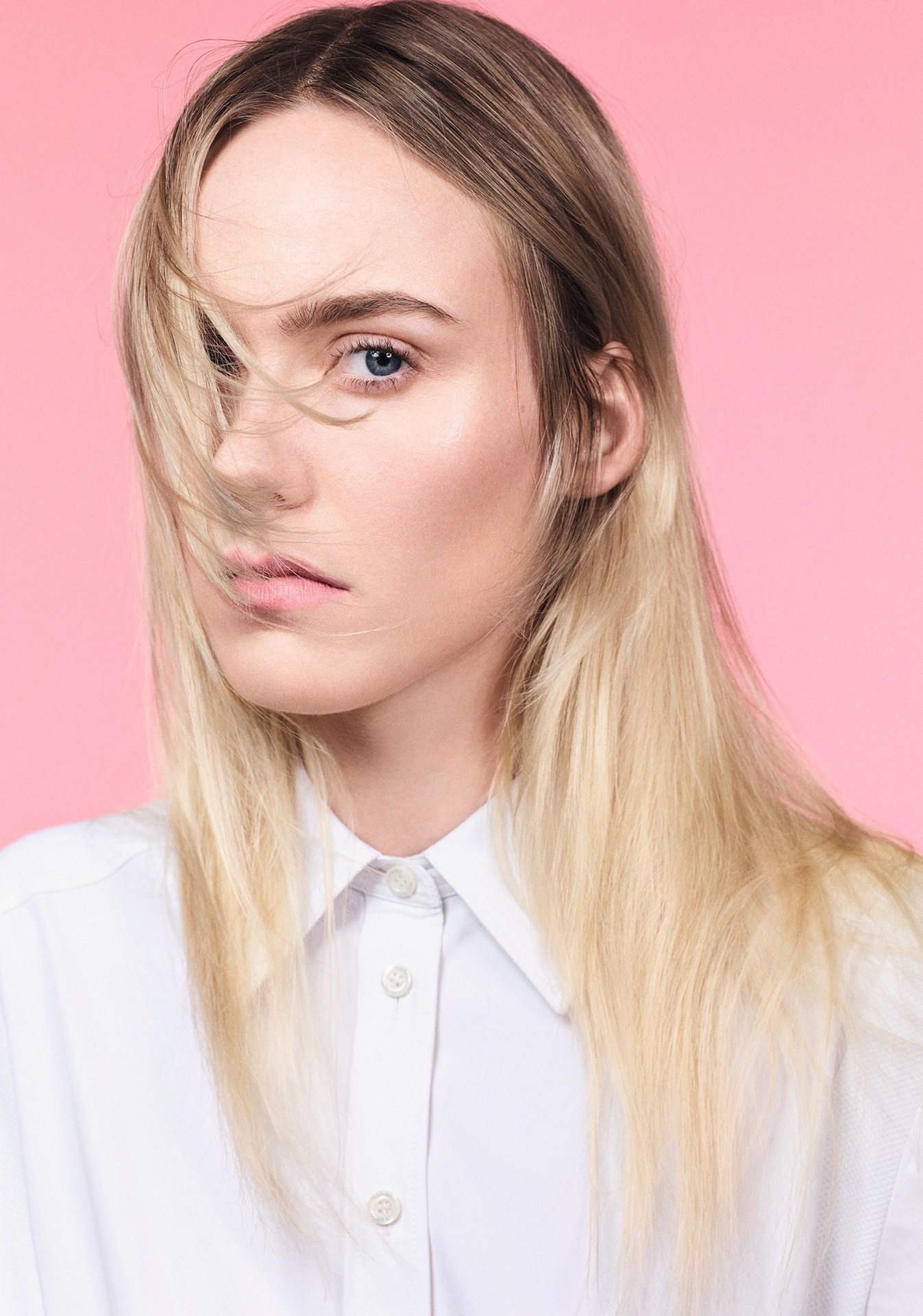
For Burton, who learnt first-hand from McQueen, there was a sense of liberation in going back to this way of working, to “stripping back”. She told this magazine in 2012: “I realised almost immediately – pattern-cutting, that was what it was all about. As the stories go, you’d go home in the evening and come back the following morning and there would be these incredible things that Lee had stayed up all night to make. It was never just a job. And I never stopped learning.” She describes this collection as “a study of clothing and a study of character”. Garments frame the faces and hold the bodies of the people wearing them, empowering never overpowering, characterful and revealing character indeed. The only motifs, meanwhile, are doves – symbols of love, birds of peace – and a digital and photographic print of an archive McQueen boned tulle corset: a dress on a dress, a skirt, a T-shirt. It feels like the ghost of a garment.
Today, Burton makes more than a few incredible things of her own. Working with a still relatively small and close-knit team of people – she calls it a creative community, and if she is proud of anything, she is of that – she cuts, sews and weaves her form of magic. Hers are instantly recognisable pieces, intense and exceptionally special – individual. Increasingly there is a reality to her designs that perhaps belies the workmanship that goes into them: even the most apparently simple garment may be toiled four or five times to ensure it fits precisely how its creator wishes. These are garments inspired by a belief in the value of handwork, in the emotional power of clothing and an unwavering conviction to keep going: “to perfect and perfect and perfect”. Burton is a shy and modest person, which, given her profession, might be considered unusual. She is brave too, though, and perhaps more McQueen in her sense of purpose and ability to make the seemingly impossible happen than she has ever given herself credit for. There is a sense of freedom in her more recent work that makes that all the more evident, a feeling of her own personality in the work that she does. While she is entirely sensitive to the foundations this modern, British house is built on – indeed she has long been pivotal to it – Alexander McQueen, the man, thrived on beautiful chaos and hers is a quieter, gentler universe. Still, “I’m a woman, but that doesn’t make me a fluffy romantic,” she says.
Burton’s allegiance to the house of Alexander McQueen runs deeper than mere respect for a world-renowned brand or excitement at the opportunity to examine and recode its meaning. Creating in her central-London studio – where at least some members of the team have been with McQueen as long as she has or “since he was here” – she produces work for the label that is a labour of love, inspired by craft, community and the power of femininity in every incarnation.
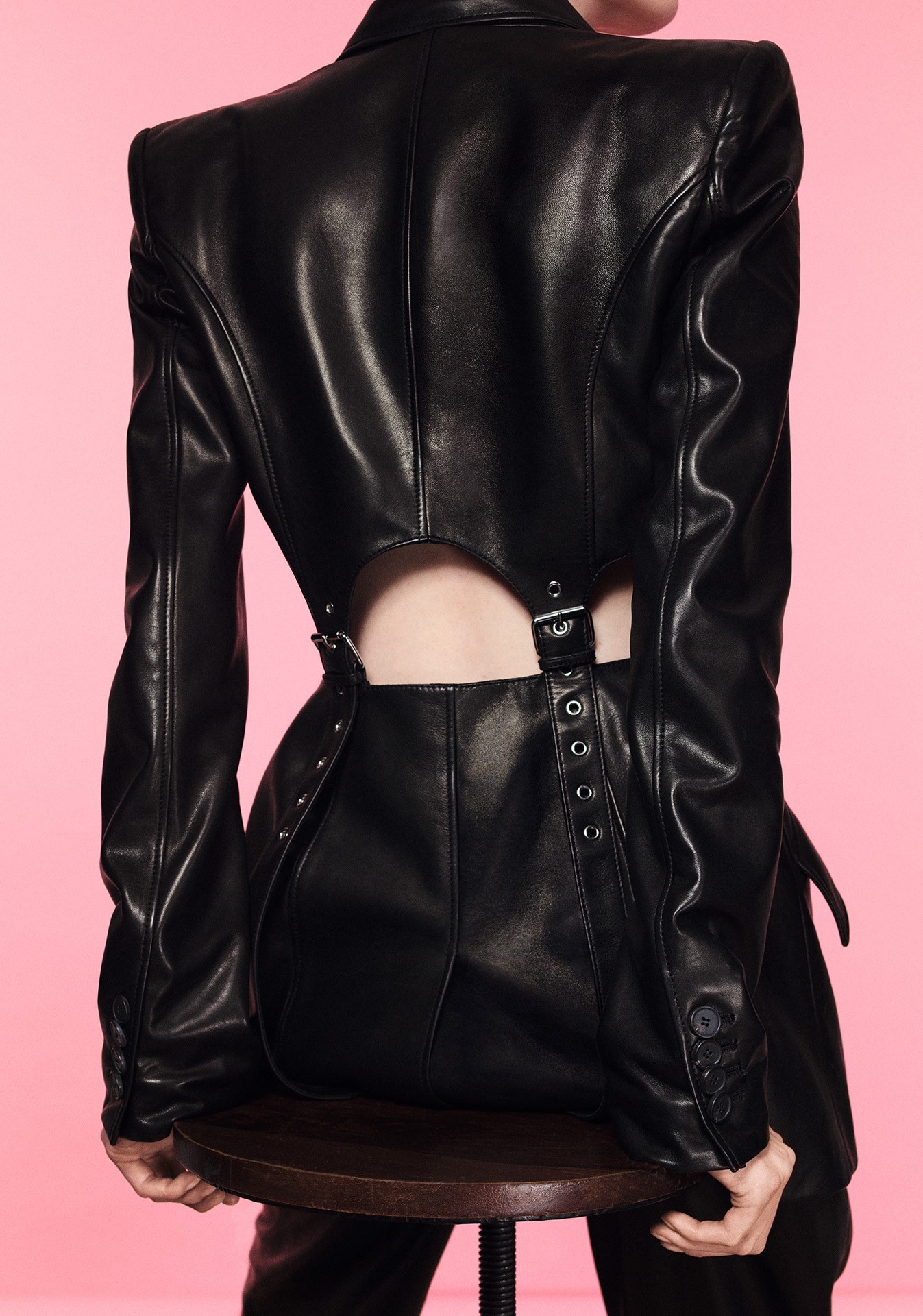
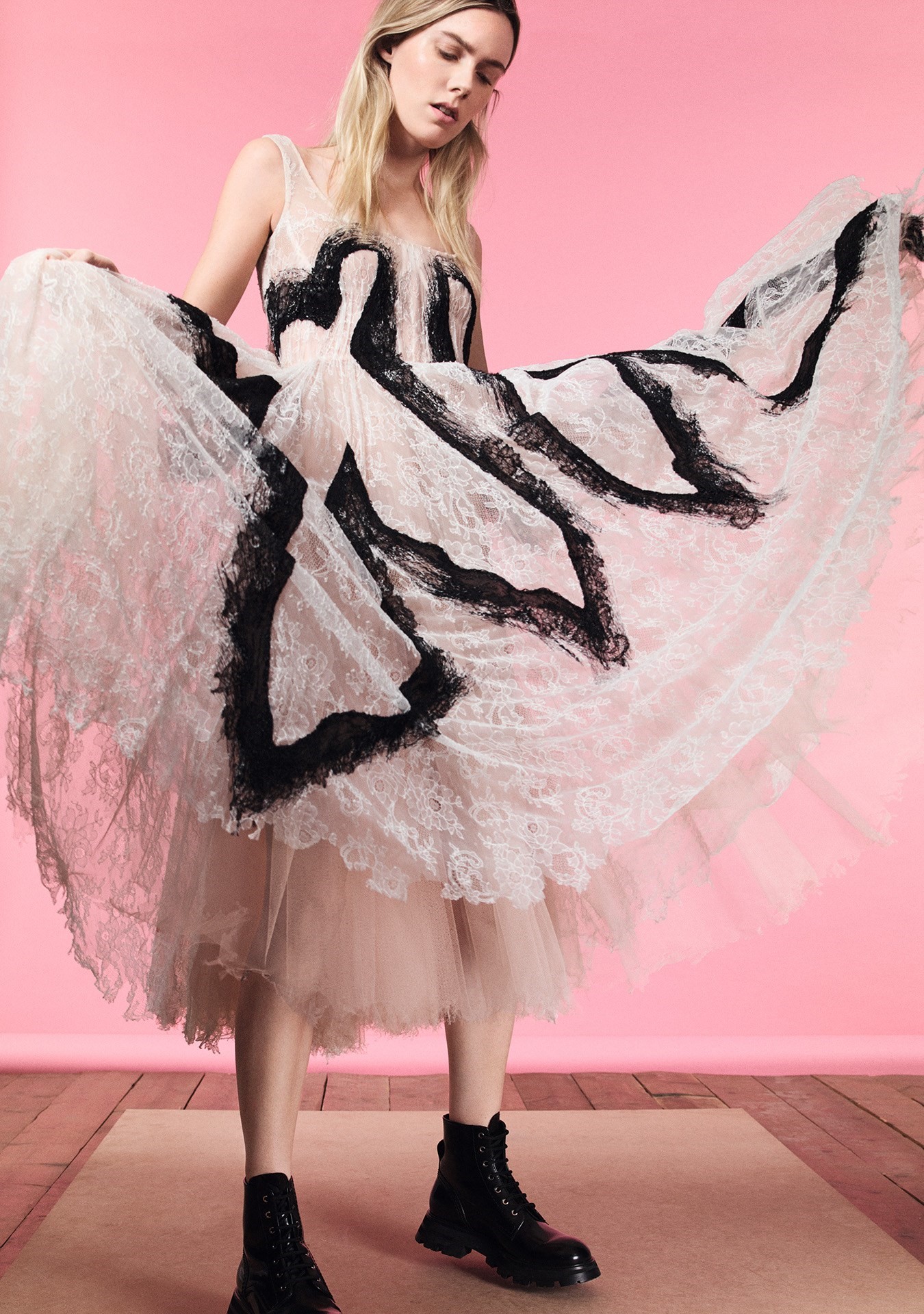
AnOther Magazine: Rather than talking to the press after you showed Jonathan Glazer’s film of your collection, you wanted people to make up their own minds, to have feelings this season. That was interesting because that’s how it used to be. People who wrote about and edited fashion didn’t talk to designers after each show. It all felt more remote in some ways, but freer in others. Do you think that the time we are living in – the distance created by the pandemic and the lockdowns – almost gives us more space to think in that way again. To have feelings.
Sarah Burton: I think this has been a year when there has been so much noise and so much constant media, 24 hours a day, that it felt to me like information overload. I felt numbed by it. I wanted to do a film that moved people and therefore wanted them to have their own opinion, to know what they really thought. Sometimes I think the system undermines that, undermines brilliant writers by telling them what to think. Lee always used to say he didn’t care what people thought as long as they felt something. It was important to me that people felt something this time.
AM: How was the process of shooting the film? How did it compare to staging a show?
SB: I loved working with Jonathan Glazer. I’ve always been a huge fan of his work and he has such a clear vision. It was very exciting, inspiring and creative, in the purest sense, to do something different in a year when everything changed. Making a film instead of a show made it somehow very important to talk about human connection, it was about a series of intimate moments and people coming together. It made me think about characters and clothes more, and how those characters moved in the clothes, who those characters were. It opened up a whole world of McQueen women and men.
AM: You talked about coming home, shooting in London, against the London skyline. Perhaps part of the reason for shooting here was practical, but it seemed to mean more to you than that.
SB: Pretty much the first thing that Jonathan and I discussed when I showed him the line-up was that we wanted to shoot the film in London. It was much more than just a practicality. It would have been easier to shoot in any park or in nature. Because I knew hardly anyone was going to be able to see the clothes in the flesh, it was more important than ever to give them a three-dimensional appearance. They had to look like a silhouette. I didn’t design them for a flat screen, they had to move. We always design like that. The clothes have to work from every angle.
AM: It’s a cliché maybe, but perhaps having so many things taken away from us makes us appreciate the things we do have more than ever.
SB: The whole situation with Covid-19 made me really appreciate my brilliant team and how amazing working in London is. Everything was shut and, even though I have lived here for years – for most of my life, in fact – I noticed things I hadn’t noticed before. It was as if an amazing peace had descended on London. Lee was born in London and the city is so integral to what the house is about that it felt like the right place to be. It has such spirit. We also went back to designing in the way we did when we very first started out, looking at the essentials of what we really needed to make something work. We made the film very early in the morning. It was magical. The sun was rising, which made everything look more sharp, more intense. The Thames is a part of London that has never changed, it’s a place where the old and the new come together, where St Paul’s is next to very modern structures but the overall effect is somehow timeless. It’s not perfect but there’s beauty in that too. Whatever else has happened, the Thames remains the same. It’s like a lifeline, a vein – it breathes. It makes you think of paintings and poems. And because it was so empty, everything seemed more intense – amplified.
AM: The idea of the old and the new coming together is also very much at the heart of Alexander McQueen, the past informing the present and the future, and a sense of history being embedded in the clothes has always been part of the storytelling process.
SB: I think it’s exactly that. We always look back to go forward, whether it’s looking back at a period in history or looking back at McQueen’s own history, looking back at a show or a technique or even a pleat or a dart ... The important thing is that it then twists and becomes relevant to people now. Especially at the moment, you want to understand that there are things you can rely on, things that are familiar. The whole world is in chaos, so you want a sense of stability. So, taking a trench coat and subverting it, or taking a white shirt and changing it to the point where it becomes McQueen enough to be a piece in itself.
AM: You showed menswear and womenswear together in the film. Why?
SB: The process of designing the collections was very much linked. It was about characters and the way they interact, about how characters – and people – relate to one another. Increasingly we are bringing McQueen womenswear and menswear closer together, there is an ongoing conversation between the two. There are references to women’s in the men’s and vice versa. We’ve been doing that for some time now.
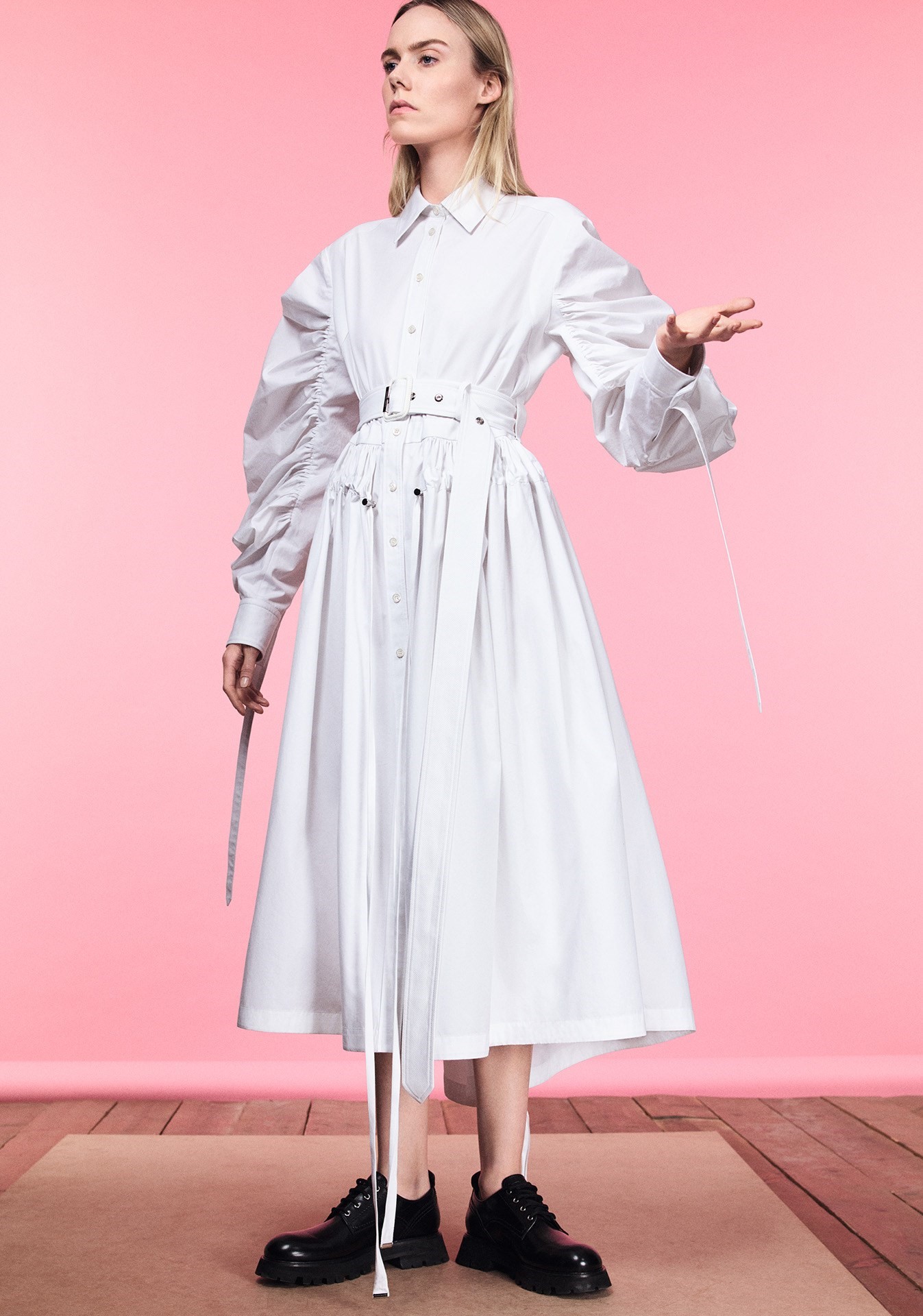
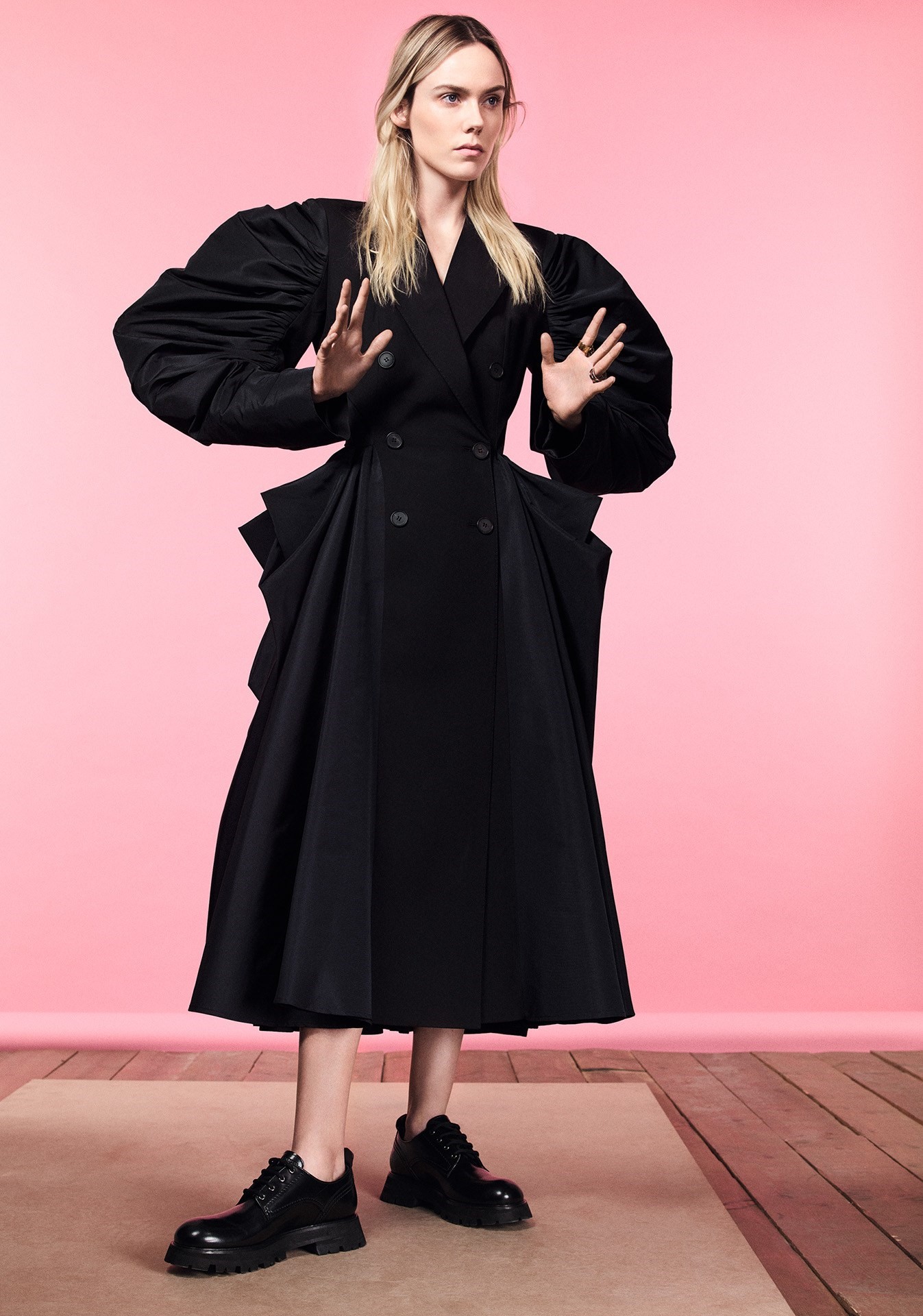
“Making this collection was pretty much the one thing that I wasn’t worried about when we first went into lockdown. Then, once we finally came back into the studio, these characters appeared. The clothes themselves were almost like characters – individual. Maybe because people had more time to work on one piece, they almost became more special. You had to be more decisive about what you wanted, about what you really wanted to say” – Sarah Burton, January 2021
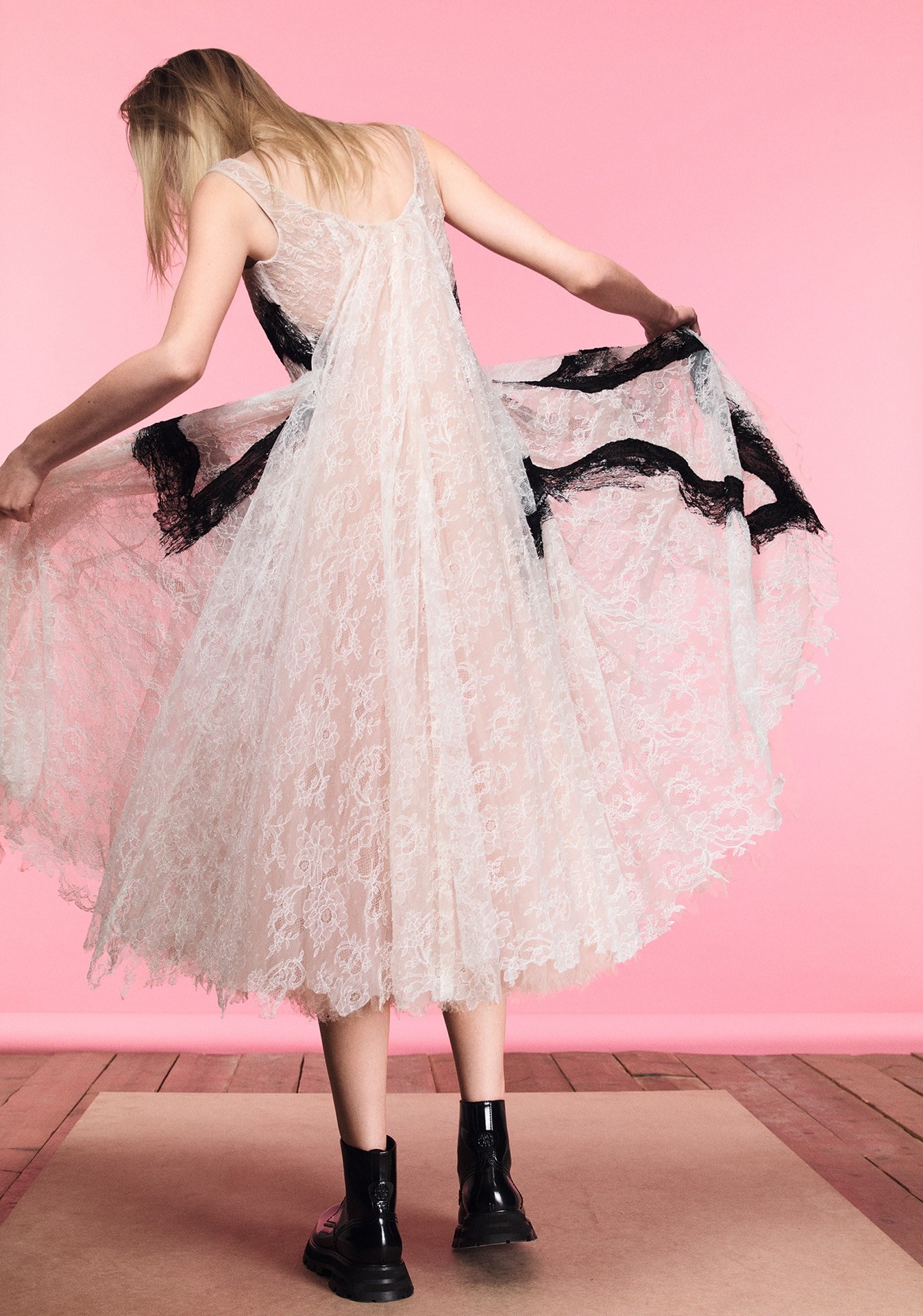
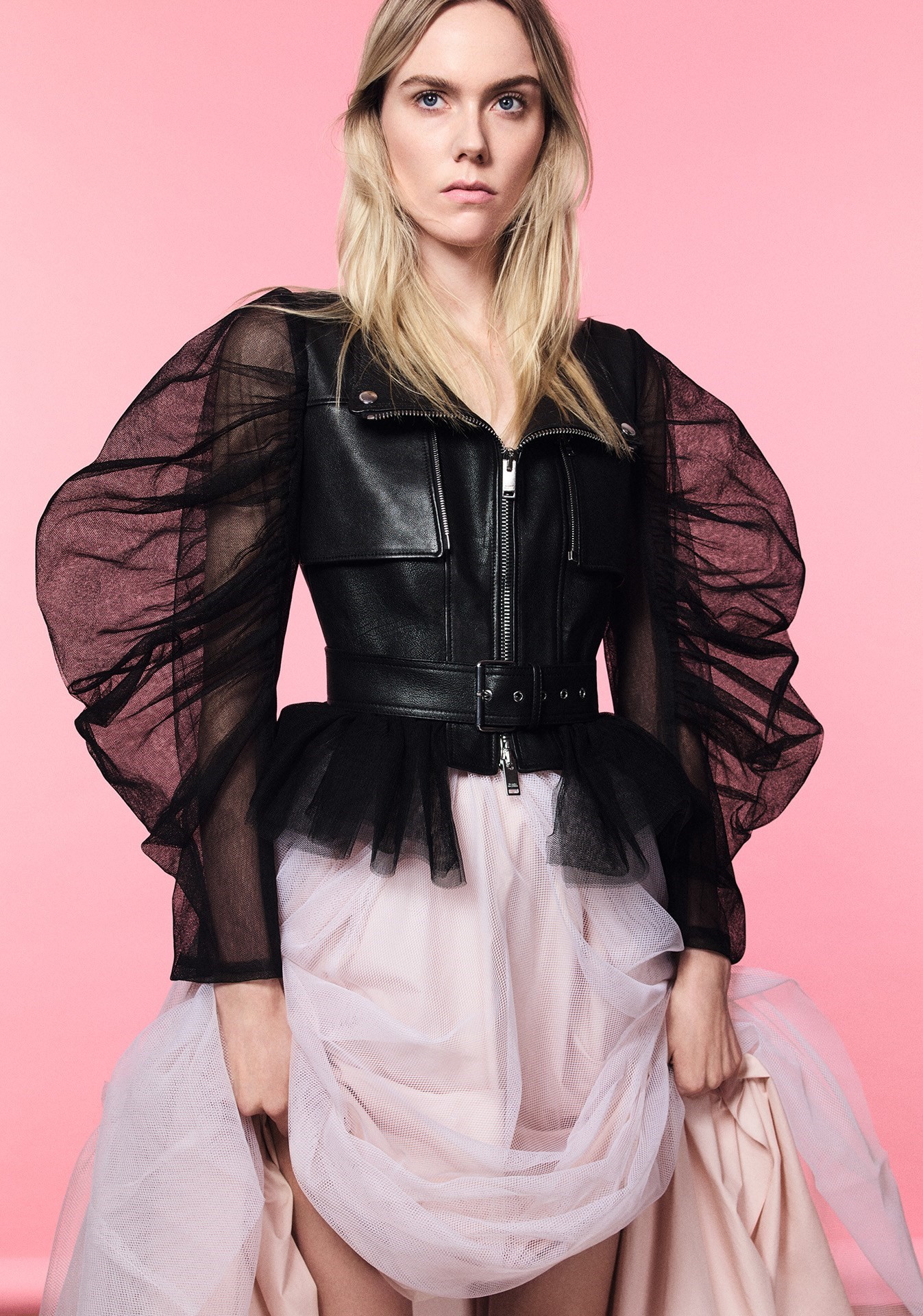
AM: In some ways the collection marks a return to the spirit of early McQueen – the relatively humble fabrics, the stripping of embellishment, the idea of London, inspiration from street culture and British tradition. Did you feel that?
SB: It was about stripping back. It felt right to do something very pure in silhouette, something about form and construction. For me, this is not the right time for ostentation or fantasy in clothes. You want something that is very human, very real. It’s like, this is where we are, this is our reality, and you can’t escape from that. It felt wrong to flee. We still had access to incredible fabrics but it felt really good to use more straightforward materials – polyfaille, denim, cotton poplin. And upcycled fabrics – parts of some garments were made in stock fabric, others were made out of remnants of lace and tulle from past collections. And the way we saw it develop wasn’t about a girl in a field but in a studio, against a plain white background, with no one on the streets outside. It’s actually much harder to make things that aren’t embellished look beautiful, because there’s nothing to hide behind – you are reliant on pattern-cutting, you can see every single detail, every single mistake. We had to perfect and perfect and perfect.
AM: You began the collection during the first lockdown. How do you think that affected the end result?
SB: During lockdown, when we were all working separately from home, I saw the team’s ability to cut patterns and make beautiful things on the stand. Lee was always about pattern-cutting and I learnt how to do that from him. Lee very much taught me how to pattern-cut and how to sew. There was something refreshing about going back to the way we worked at the beginning, about working with things that we already had. It was like, OK, we’ve all got a mannequin at home, we can all talk to each other. Let’s drape. It was very three-dimensional in approach.
AM: There is something about this moment, in a wider sense, that harks back to the early days of McQueen, to the Hoxton Square era. You were, of course, very much part of that. Do you remember that time fondly?
SB: I remember it very fondly. And the situation now heightens the fact that that was a very special time, heightens the sense of creative freedom that time represents. We were in a basement in Hoxton Square, the fabrics and looks were made on the stand with what you had to hand. Lee could make something out of what appeared to be nothing – a piece of wood, rubber, metal, inexpensive lace. We couldn’t afford to make endless toiles. We made one, draping fabric on the stand, and then the garment in the real fabric. It made you think outside the box – made you focus on pattern, shape. I remembered being part of that when we went into lockdown and felt very lucky to be used to making clothes and creating, just making things that we really believed in. I learnt so much from being in the studio with Lee. I don’t even know if those jobs exist any more, it was so hands-on. You got to touch the clothes, touch the fabric, and it’s easy to forget how rare that is.
AM: There’s an engineered tulle toile print of a McQueen dress in the collection, almost as if the ghost of a dress is printed onto another dress.
SB: I always have the feeling that clothes should be timeless and, if they’re beautifully made, stripped to the bare bones and essential, that will hopefully be the case. It’s also nice to look at the insides of clothes, which are often as beautiful as the outsides, and at how to make clothes feel relevant for today. How do we make clothes that are more considerate to the wearer, more emotionally resonant? With London feeling completely deserted – bereft – I wanted people to be able to relate to the clothes. I also wanted the collection to be bolder and stronger. I wanted to say, “It’s OK – we are carrying on.” I wanted to be brave, to make things I love and to challenge myself.
AM: You have opened up the processes behind your work in the educational space at Bond Street to students in particular. Why is that important to you?
SB: I was fortunate enough to be a student when Lee took me on and Simon Ungless, my tutor at Saint Martins, introduced me to him. I had an amazing opportunity to work as a team, as part of a creative community. It was very much like that at Hoxton Square. I wanted to show students that there are so many roles you can play within a team that are important, I wanted to demystify the idea of fashion being unapproachable as an industry. Sometimes, to work in fashion can be challenging, but I want young people to feel that anything is possible.
AM: You also work with younger communities who maybe aren’t used to being immersed in fashion. I’m thinking about your recent project in Wales in connection with your Autumn/Winter 2020 collection. You sent young teenagers looks from the collection in smaller sizes and your team travelled there and held workshops to help and inspire them, sent them packs of embroidery so they could customise their clothes, style themselves and then take pictures.
SB: I felt like we’d been to Wales and been inspired by their culture, their history and their narrative and, in the first instance, we wanted to invite some of the schoolchildren there to the show. By the time it happened, Covid-19 had kicked in so it wasn’t possible. We had already made and sent them the clothes. They customised them and styled themselves and each other and we worked with Clémentine Schneidermann and Charlotte James, who had been photographing them for a while, to document this project with us. I think we are very lucky to have a creative way to express how we feel. Through our jobs, we say how we feel. We wanted to help children understand that you don’t have to go into fashion or art but you can be creative, you can draw a picture, you can take a picture, you can style your friend. You don’t have to want to be a fashion designer, it’s a way of being heard without having to be literal. It’s a sense of release with no fear attached to it, and that’s a great thing. I also think that by the time you get to college you are already in a position of privilege and you want to be a fashion designer, but it’s not just about my job, the designer, that hierarchy. I wanted to reach out to younger children to show them what’s possible, to show children who might not otherwise understand that there are lots of different roles in fashion – whether that’s in embroidery, styling, photography. It’s not just about being a designer.
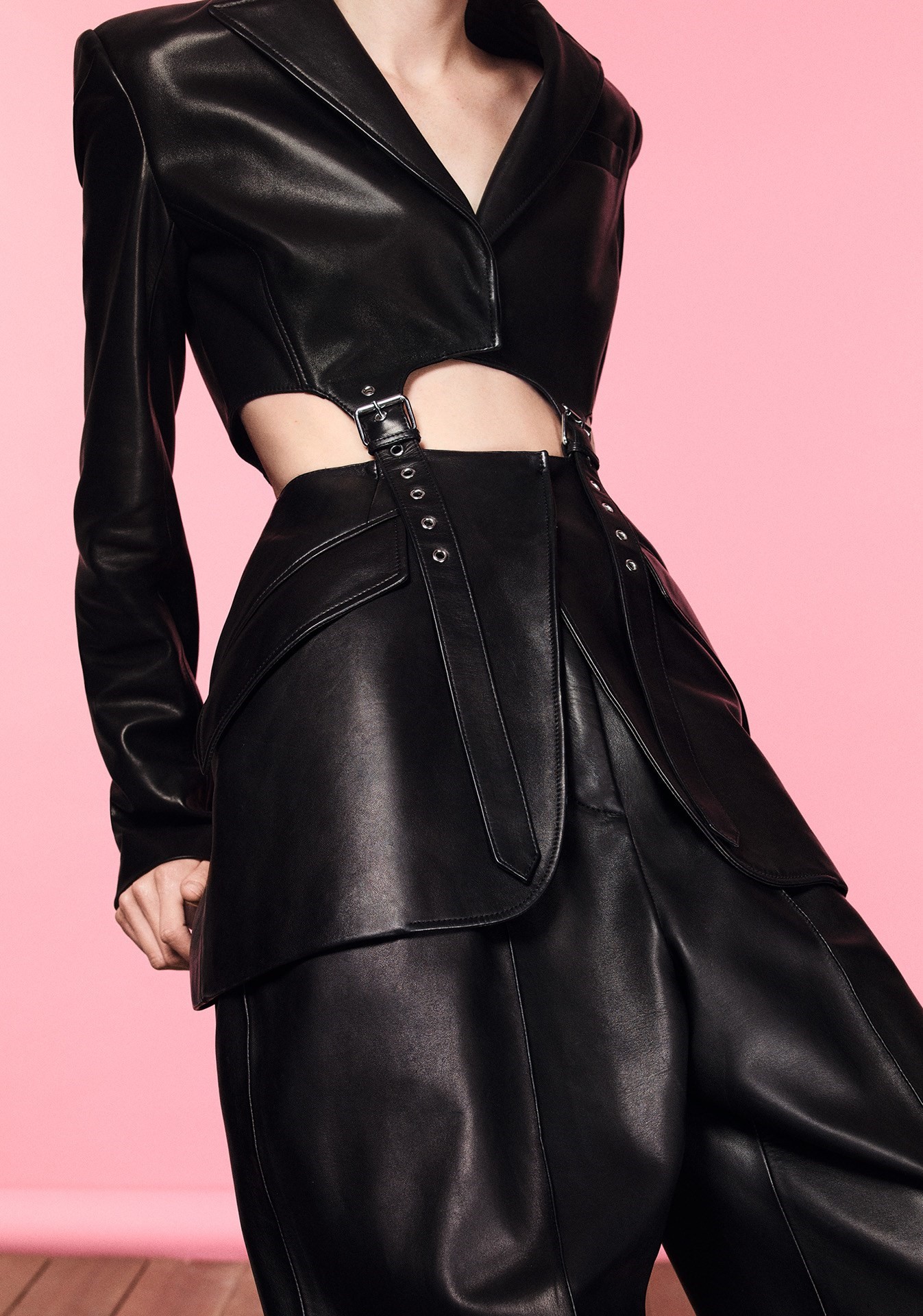
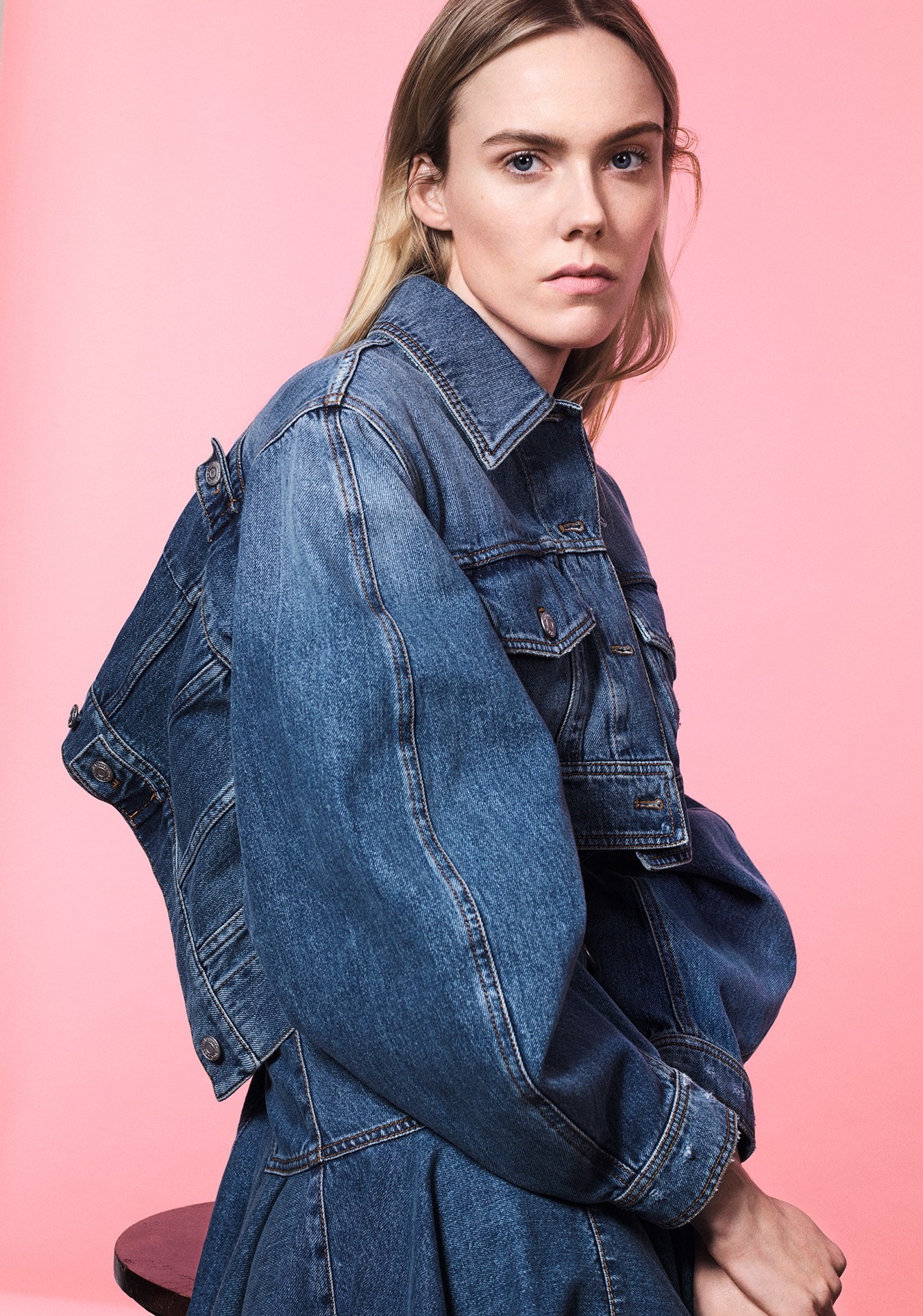
“Lee could make something out of what appeared to be nothing – a piece of wood, rubber, metal, inexpensive lace. We couldn’t afford to make endless toiles ... It made you think outside the box” – Sarah Burton
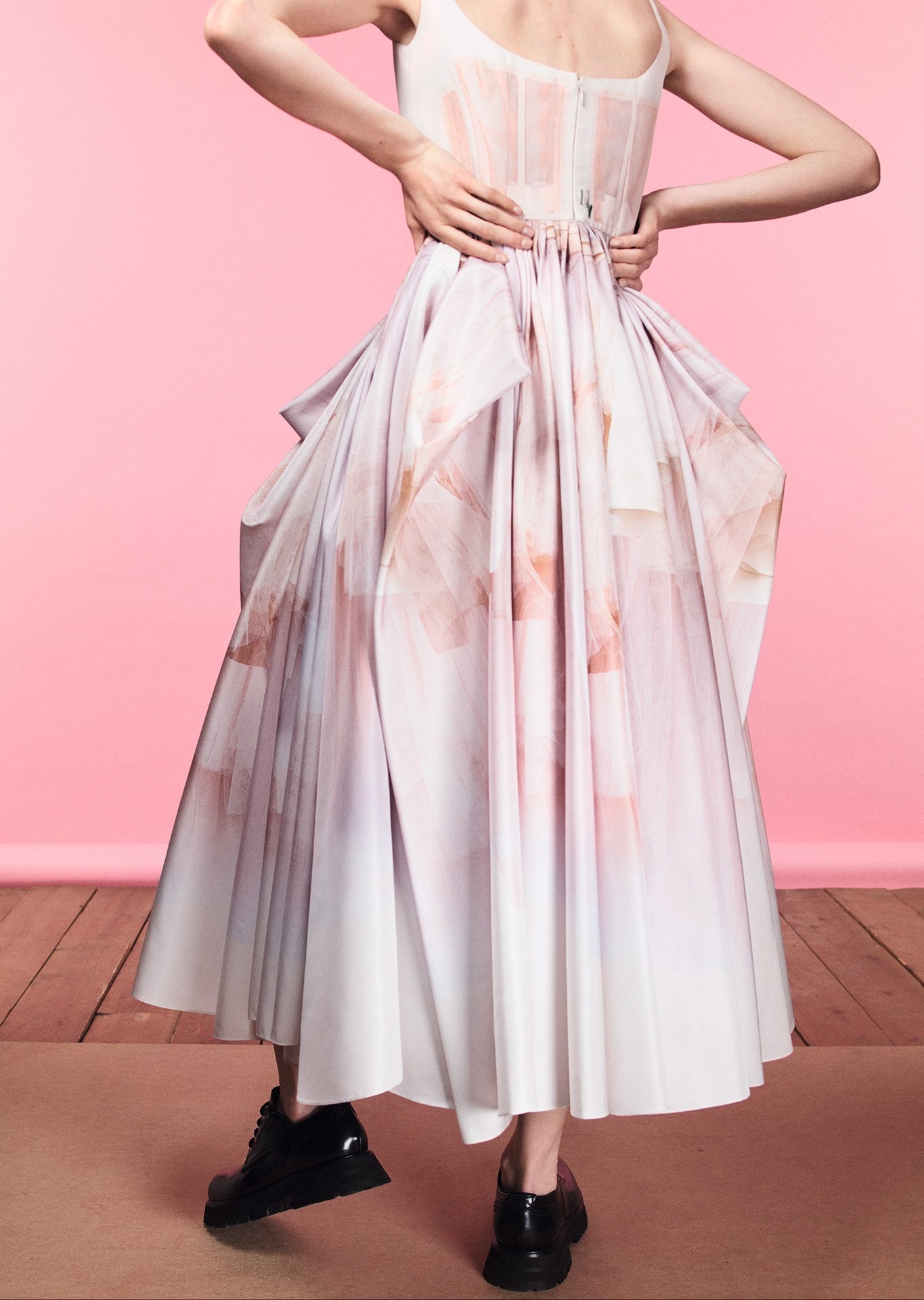
AM: You also work with specialists in highly specific techniques – many of them have been in their fields for generations. William Clark, one of the last linen beetlers in the world, for example, who treated the linen in your Spring/Summer 2020 collection.
SB: What was really great with William Clark and the work we did with linen was finding an old tradition and making it new. We asked them to beetle whole garments, which they hadn’t done before, taking the technique a step further. We produced so many of the black beetled linen jackets that they bought a new beetling machine especially for us. These crafts are becoming extinct and it’s so important to keep them alive.
AM: You often talk about community and creative community in particular. What does the word mean to you?
SB: It means my team and working together. We are a community.
AM: I’m interested in the idea of the character of women – or men – and the character of clothing, which seems to be the way you are thinking when designing collections now. Can we talk more about that?
SB: At the beginning of this process, I thought about how it is not just one woman or man we are dressing. There are all these different characters, in the studio and in the collection. The garments become these characters. They needed to live and breathe, which goes back to the idea of making a film. Each garment is an individual. The fact that people are so complex, their vulnerabilities and strengths, brings clothes to life.
AM: This collection is about wardrobe archetypes too – a trench coat, a trouser suit, a shirt dress, a pink party dress, a lace dress, a denim jacket ...
SB: It’s a study of character and a study of clothing. McQueen is always about taking something and subverting it, and I hope there’s always a sense of beauty in what we do too, a sense of reinvention and beauty in the unexpected. We are designing hybrid garments but it’s not just about two things – two familiar garments – being forced together, but about things we can immediately understand and relate to becoming something else.
AM: You often talk about the McQueen woman – your McQueen woman – being grounded. Is that part of the same conversation or something different?
SB: As a woman you have to be able to do so many things. I love that and the layers of complexity it involves. I always want to empower women, not in the obvious ways, but in ways that speak to all sides of them.
AM: Over the past decade you have done so much. You have completely rethought the collections and how they relate to each other, the campaigns, the retail concept, the social media platforms. I know that you have your team, but you are personally involved in absolutely everything, in every last stitch in a garment, every last image in a lookbook, every last comma in any written communication. When you look at what you have achieved at Alexander McQueen, how do you feel?
SB: McQueen is like my family and my life. It is like my home. People really care about each other here. My team is incredible, they’re all such different, strong personalities. Throughout this whole situation, I’ve felt that I am so fortunate to work with people I really love and respect and it’s a conversation, a conversation about making things that mean something. It is a community and quite a lot of people have been part of it since Lee was here. And that also goes back to the whole thing about not throwing away the past. It’s about constantly evolving, not discarding. It’s not about changing things as much as finding my voice in them.
Hair: Christian Eberhard at Management Artists using ORIBE. Make-up: Hannah Murray at Art and Commerce. Model: Kiki Willems at Viva London. Casting: Noah Shelley at Streeters. Manicure: Laura Forget at Artlist. Digital tech: Nicolas Fallet. Photographic assistants: Paul Jedwab, Loc Boyle and Margaux Jouanneau. Styling assistants: George Pistachio and Christelle Owona Nisin. Tailor: Sebastien Pleus. Production: Julie Sanchez at Works Production. Production assistants: Julie Rondeau, Bertrand d’Amiens and David Smit. Post-production: D-Factory
This article originally featured in the Spring/Summer 2021 issue of AnOther Magazine which will be on sale from 8 April, 2021. Pre-order a copy here and sign up for free access to the issue here.
